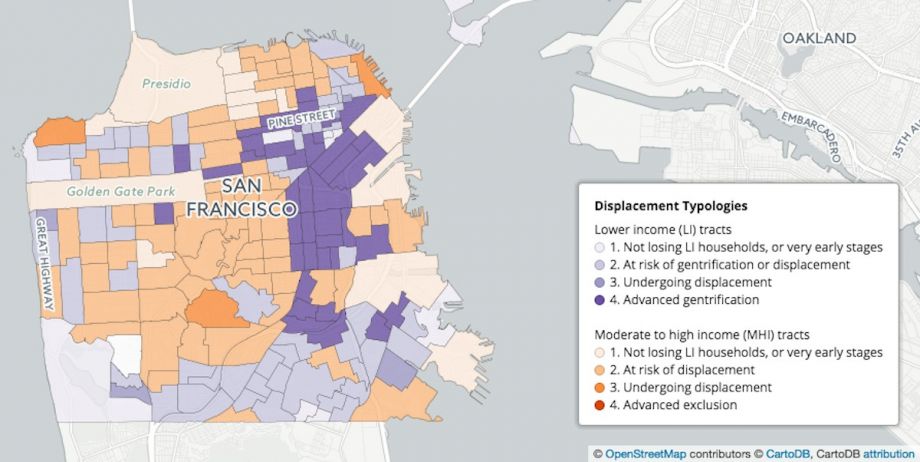By Jen Kinney.
Gentrification in the Bay Area shows no signs of slowing. In fact, it’s accelerating.
As housing prices rise and tech jobs continue to flood the region, more people in San Francisco and neighboring cities are at risk of displacement than are already experiencing it, according to UC Berkeley researchers. “The crisis is not yet half over,” says one of those researchers, Karen Chapple, who is a city and regional planning professor.
Chapple and fellow researcher Miriam Zuk’s Urban Displacement Project maps, released this week, are the result of nearly two years of regional demographic data analysis and in-depth case studies of nine Bay Area communities. The interactive map uses data from the U.S. Census, American Community Survey and others to visualize changes over time, revealing factors like employment density, percentage of renter households, non-white population and change in college-educated adult population.
Users can drill down by Bay Area county and city and also choose data options such as change in “percentage of low-income households” and “market-rate units as percentage of new building.”
The researchers found that neighborhoods that have easy access to rail transit, pre-1950s housing stock and rising housing prices are especially at risk of losing low-income households. And it’s not just low-income communities that are at risk: Higher-income areas with low-income households in the mix are rapidly losing that population.

(Credit: UC Berkeley Urban Displacement Project Maps)
[divider] [/divider]





